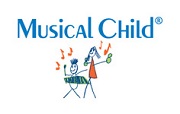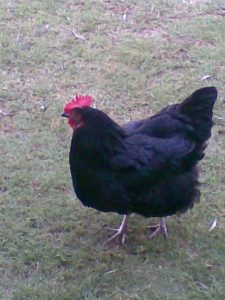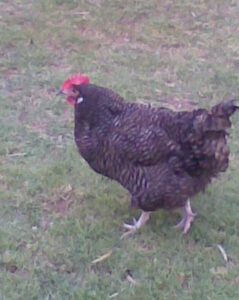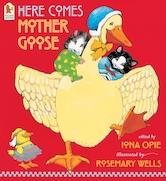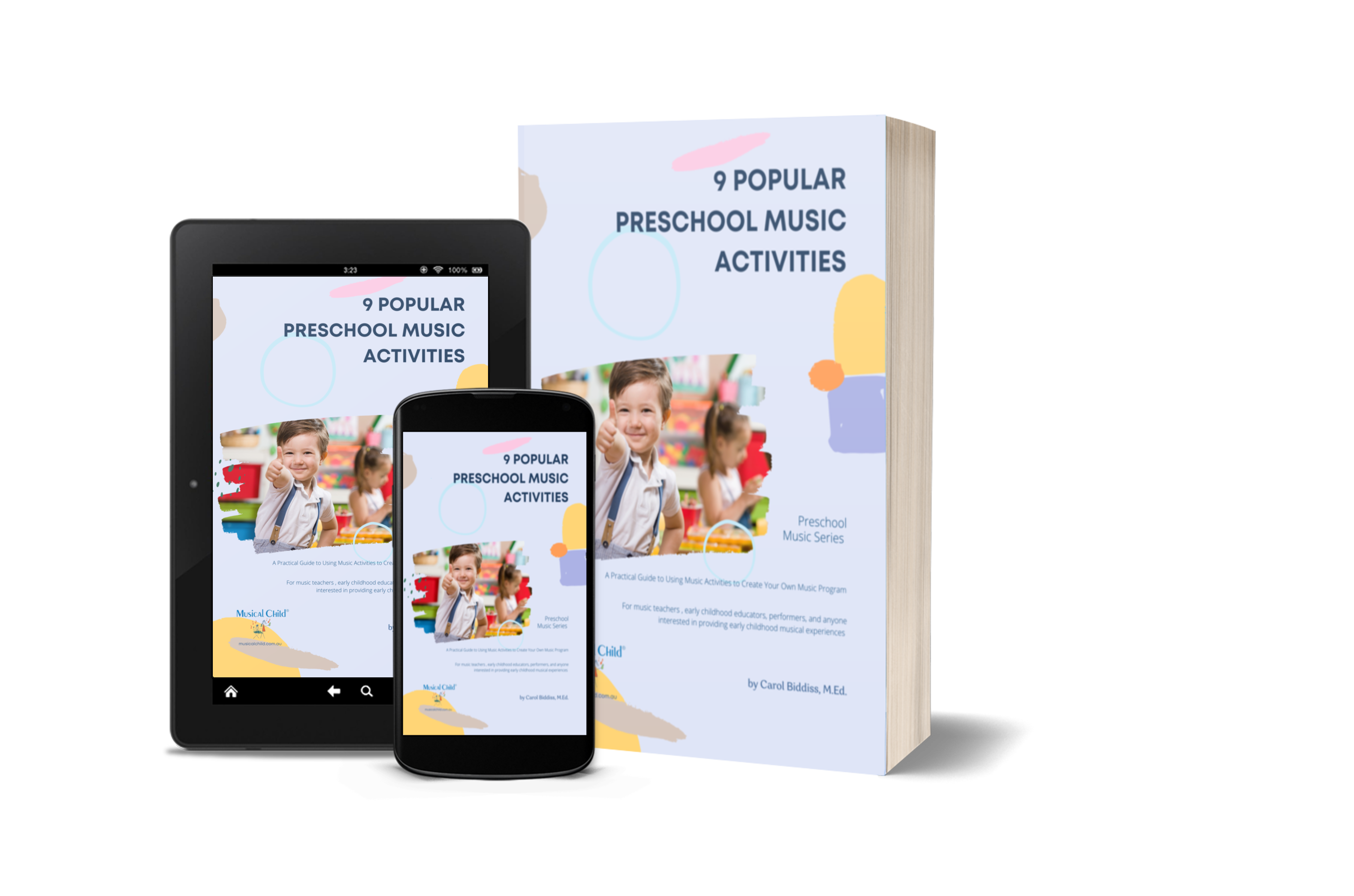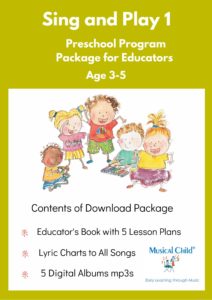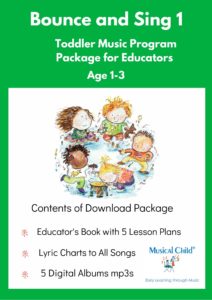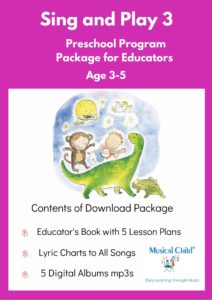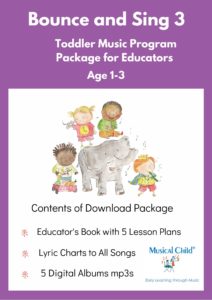Nursery rhymes are my favourite songs for young children. And one of my favourite nursery rhymes is Chook Chook. This is how it goes:
Chook Chook
Chook, chook, chook, chook,
“Good morning Mrs Hen,
How many chickens have you got?”
“Madam I’ve got ten,
Four of them are yellow
And four of them are brown
And two of them are speckled red,
The finest in the town.”
Here is a recording of me singing the little tune I wrote because I couldn’t find one already current for this cute nursery rhyme. The song is in our Toddler Lesson Plan about farm animals called Baa! Moo! Oink!
I love this rhyme because it says so much about the way many women discuss their families. We hear the pride in the hen’s voice when she says her speckled red chicks are “the finest in the town.” She’s certainly playing high status with the farmer who is feeding her! Most amusing.
The question I want to explore is “why teach nursery rhymes?” I teach them because they are precious gems! Nursery rhymes hold the English language tradition in crystalline form. And, what’s more, they work with babies right up to school kids.
Why Teach Nursery Rhymes?
There are three main language and communication benefits: experiencing pleasurable prosody; extending vocabulary, and following a narrative structure.
1.Prosody
Nursery rhymes are rich parcels of language that unlock the child’s capabilities with prosody. What’s prosody? It’s the vocal patterning in language without the meaning. It’s the way language flows easily and rhythmically, as in “Good morning Mrs Hen.” If you strip out all the meaning of the words you are left with a kind of music made with your mouth. Prosody includes the rhythm of the words and also the stresses, intonation and rate of delivery.
2. Vocabulary
Nursery rhymes enrich vocabulary. They present many rare and rewarding words to the child’s ears for the first time, e.g. this kind of of red, “speckled red.” Although nursery rhymes are short they often have a high number of non-repeated words. So they’re full of words – they are linguistically nourishing.
3. Narrative Structure
Nursery rhymes tell stories. They fulfill the children’s growing need for narrative structure as they develop awareness of people, time, event and place – the who, when, what & where of good storytelling. E.g. the farmer asks “How many chickens have you got?” and the hen replies “Madam, I have ten.”
Iona Opie and Rosemary Wells Nursery Rhyme Books
When I sing the fairly rare nursery rhyme “Chook Chook” in my preschool music classes, the adults always observe the children closely scrutinising the illustration.* There are sage nods from young heads as mums or carers whisper, “That’s like our chooks” followed by them sharing with the group two or three outlandish chook names such as Gladys and Matilda. The music activity in this instance is “to sing a song while looking at an illustrated story book”. I usually combine it with a really short discussion about what’s in the picture. This activity happens at the end of a lesson when the kids are tired, slightly entranced and ready for books.
*I like to use an illustration by Rosemary Wells in the 2001 Iona Opie classic My Very First Mother Goose by Walker Books: London.
P.S. Speckled Hen wanted to appear too so here she is. She claims she was featured as a chick!
And look for their next book for your bookshelf, Here Comes Mother Goose 2015.
Get Your FREE Educator's Resource Here
Sign-up to Receive a FREE Guide on How to Teach Preschool Music Activities.
Inside this Mini-course you will be able to download a beautiful PDF and a collection of 20 MP3s. You will learn how to deliver nine popular preschool music activities that your children will LOVE!
(p.s. It's a mini-course, that means you'll be in and out in minutes with fresh resources you can use immediately with your children.)
(p.p.s. You also get a bonus lesson on what instruments to use with preschoolers. 🪇)
